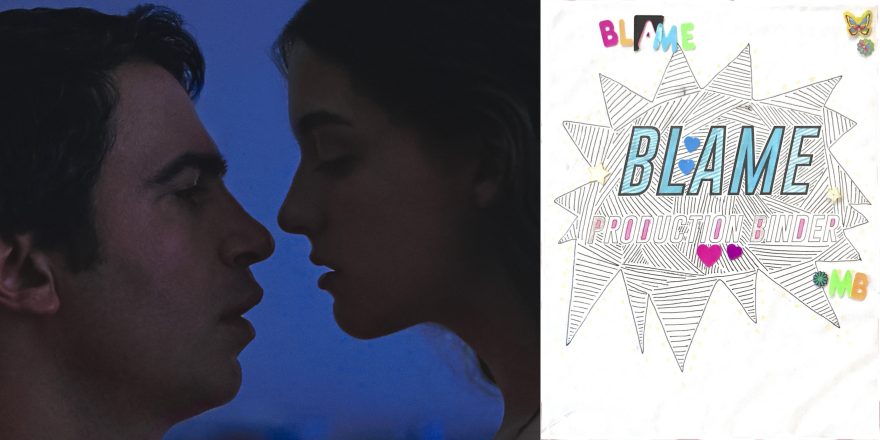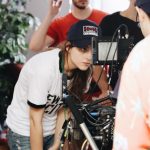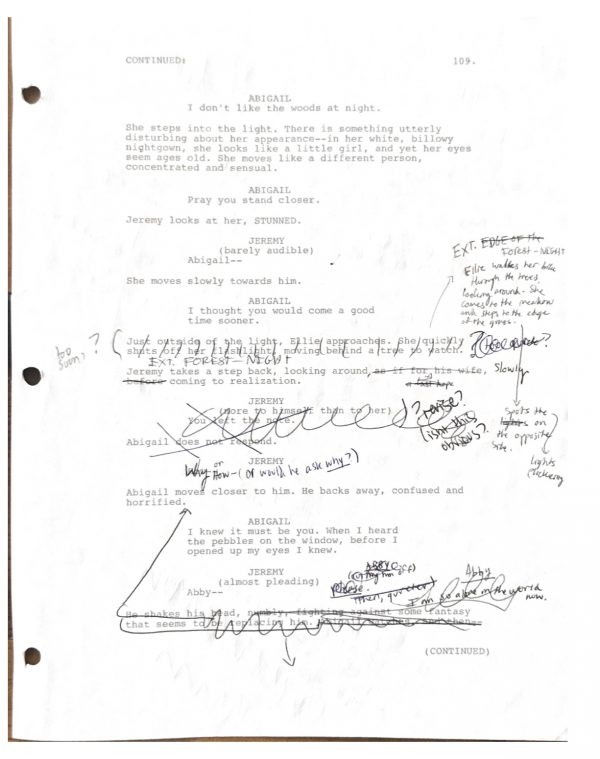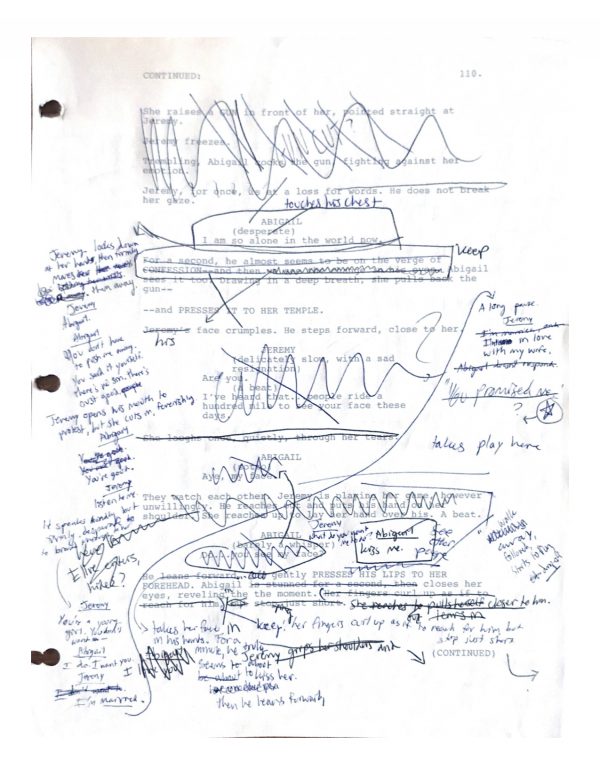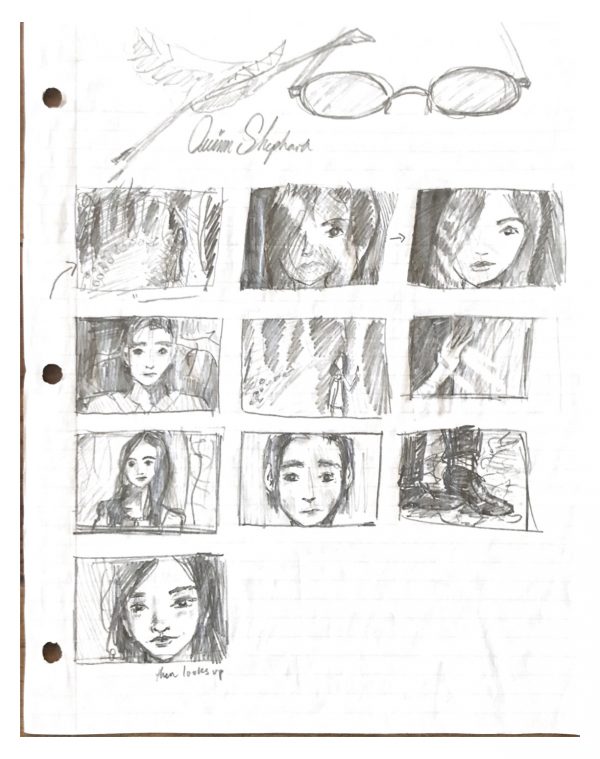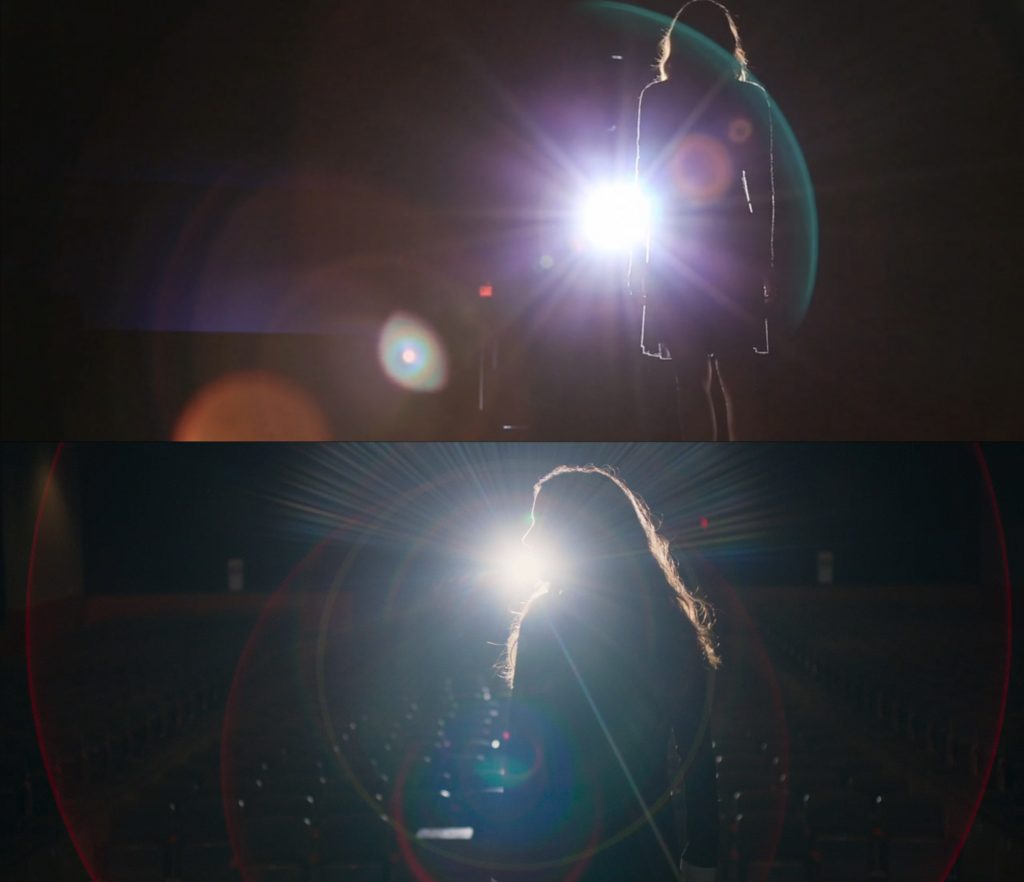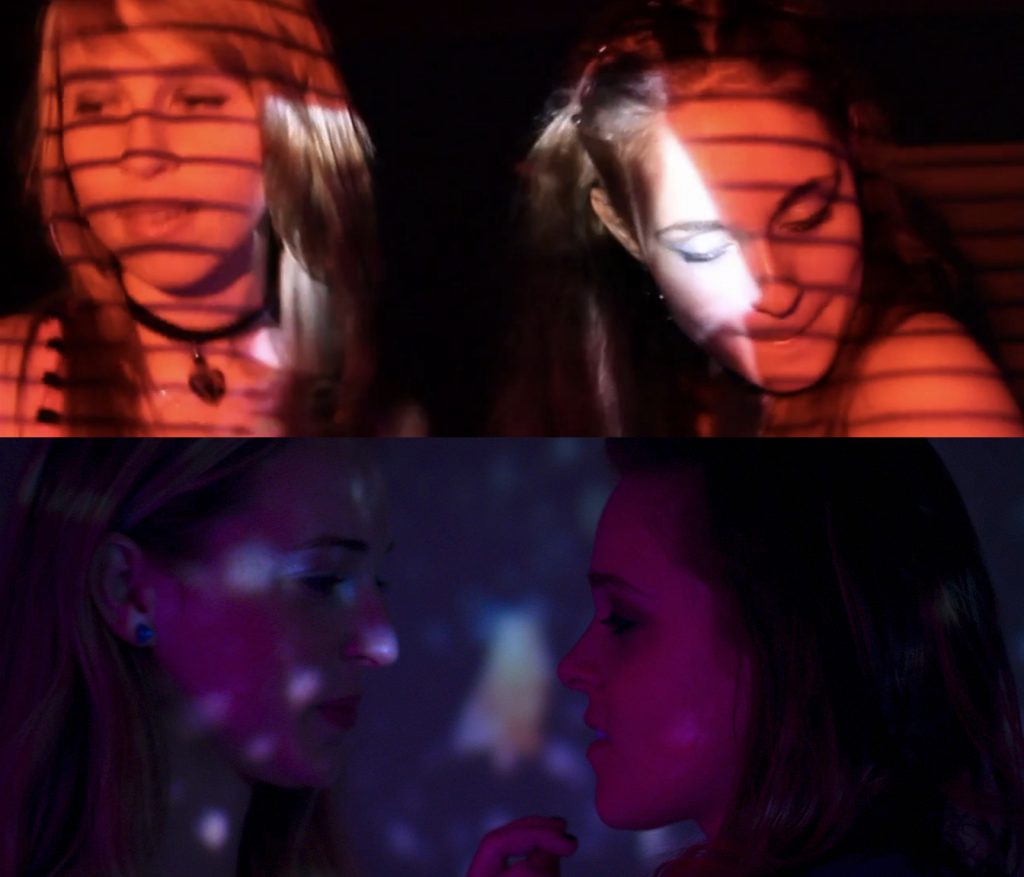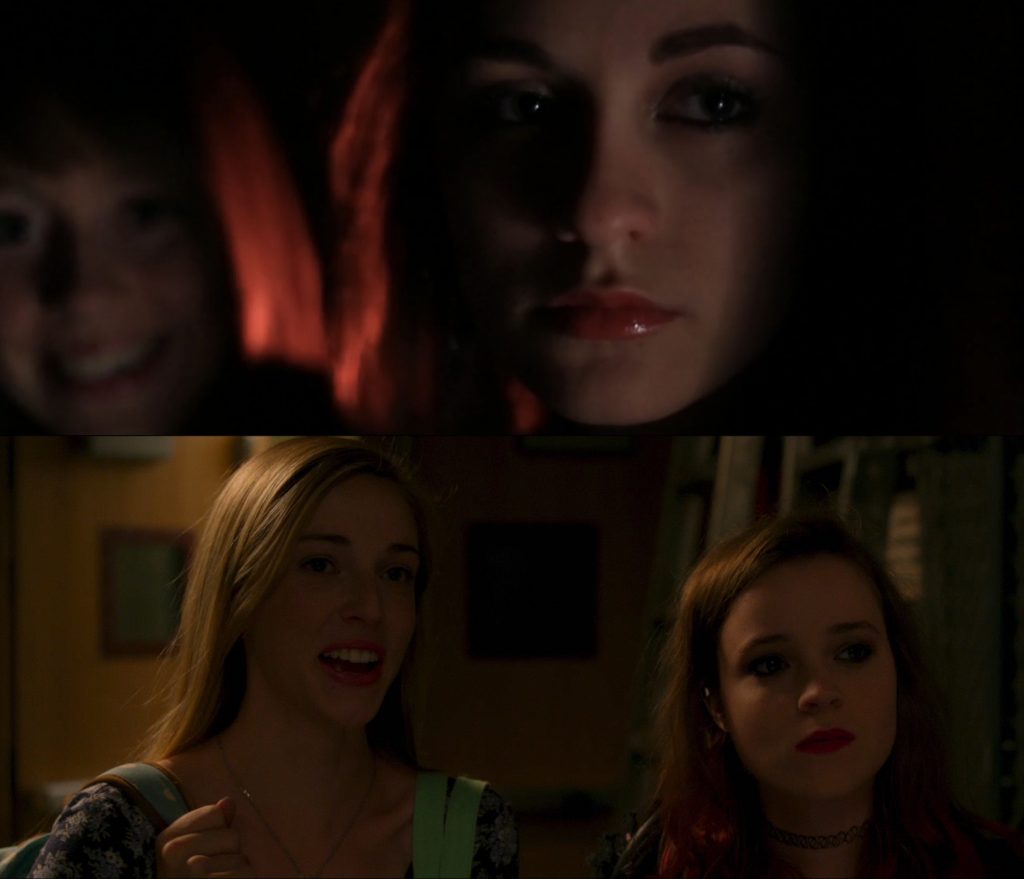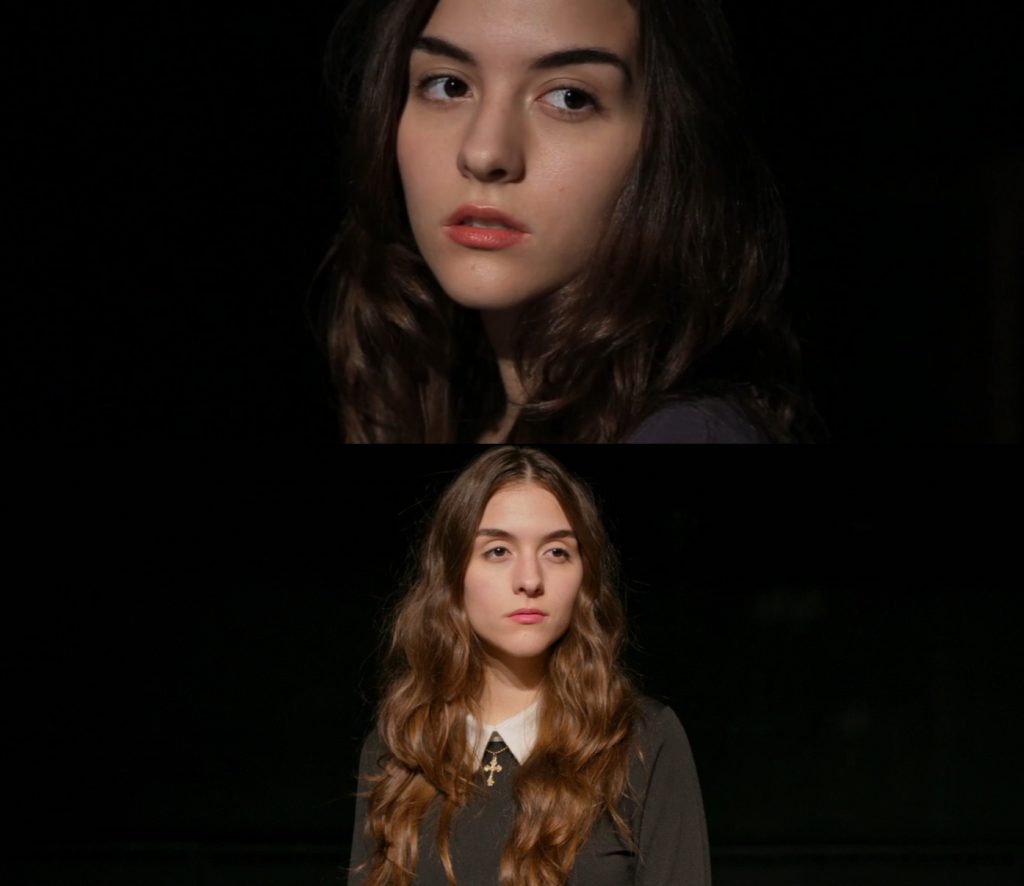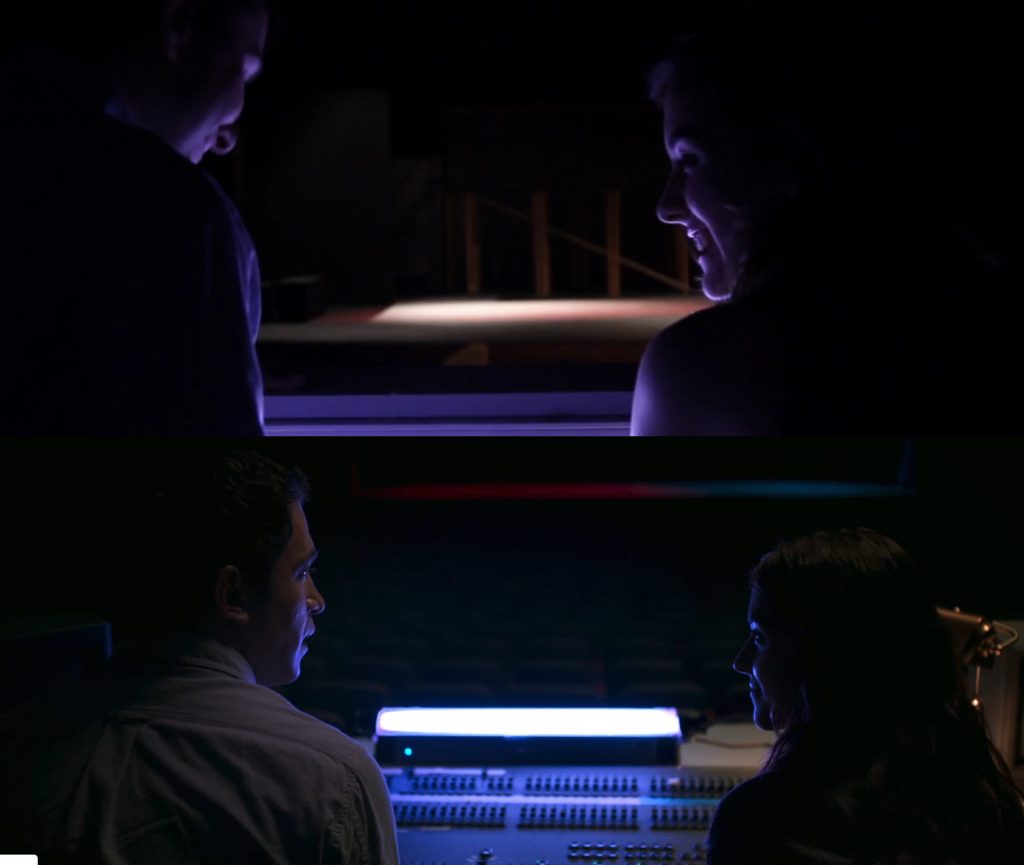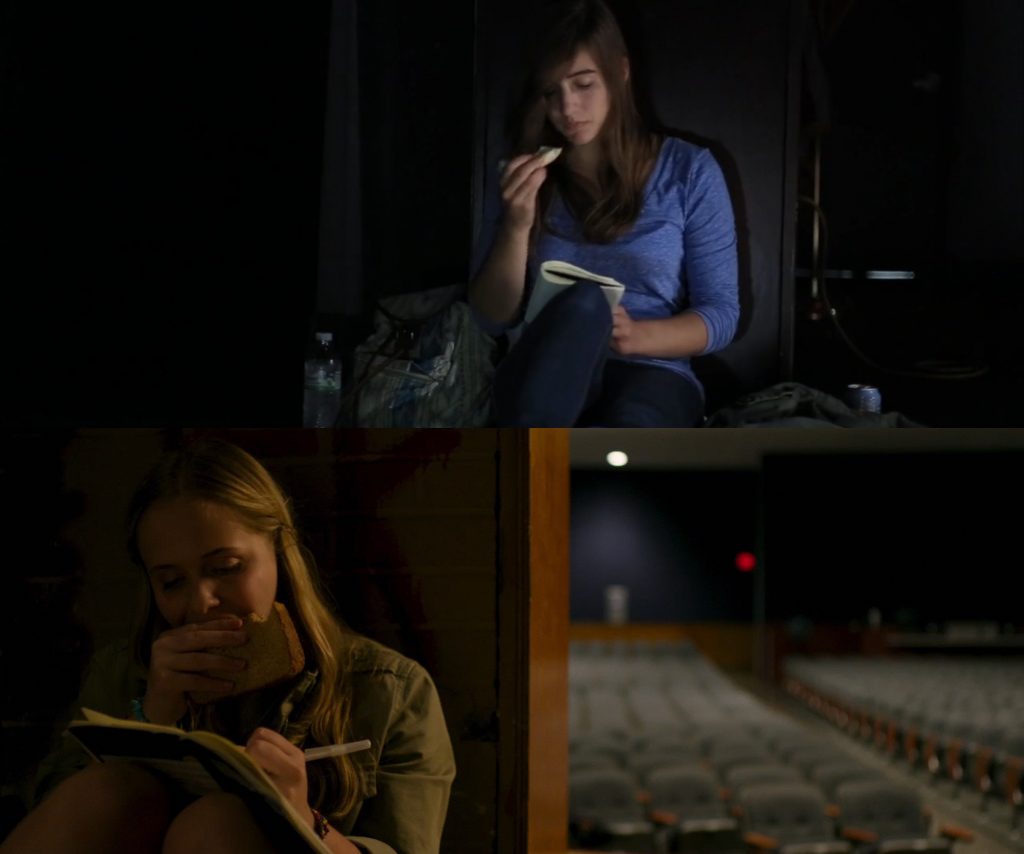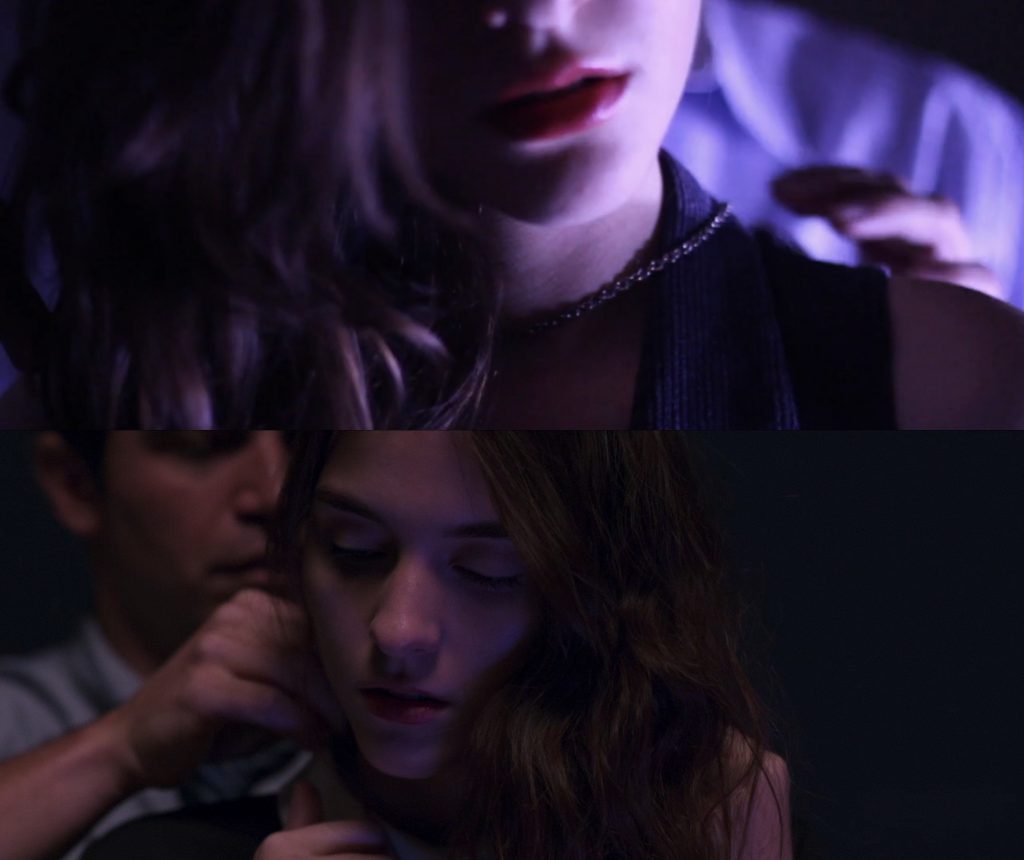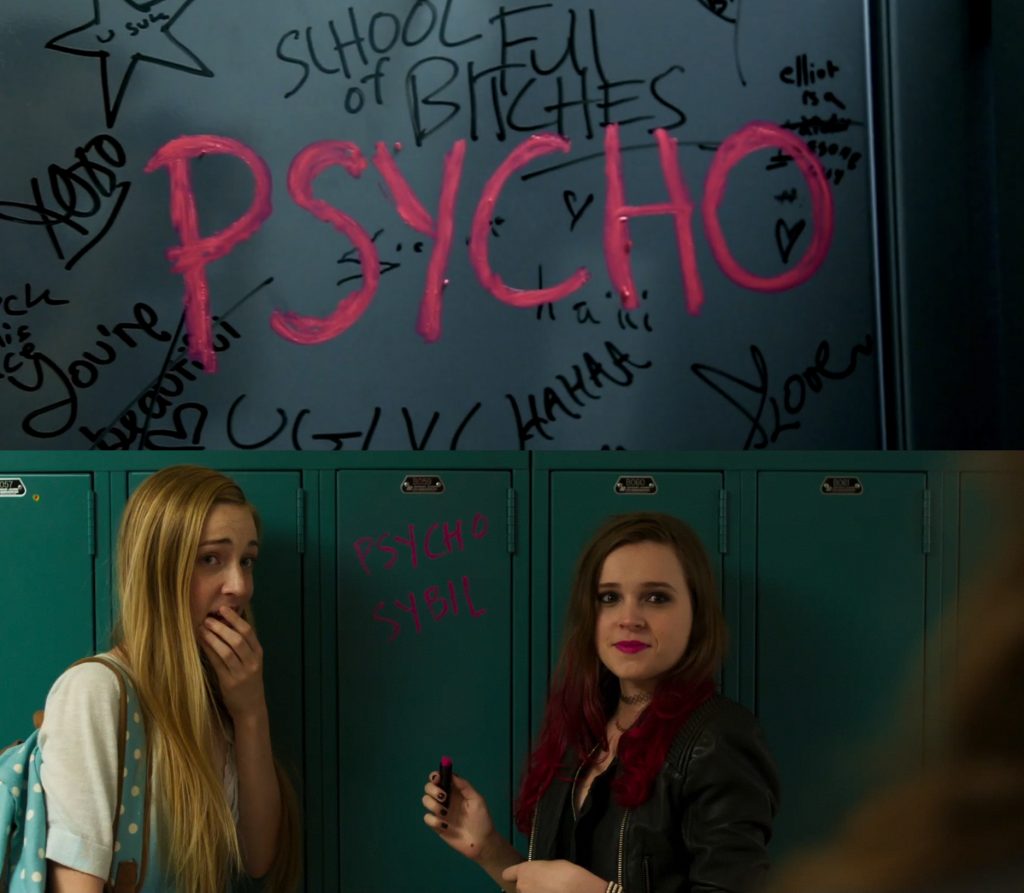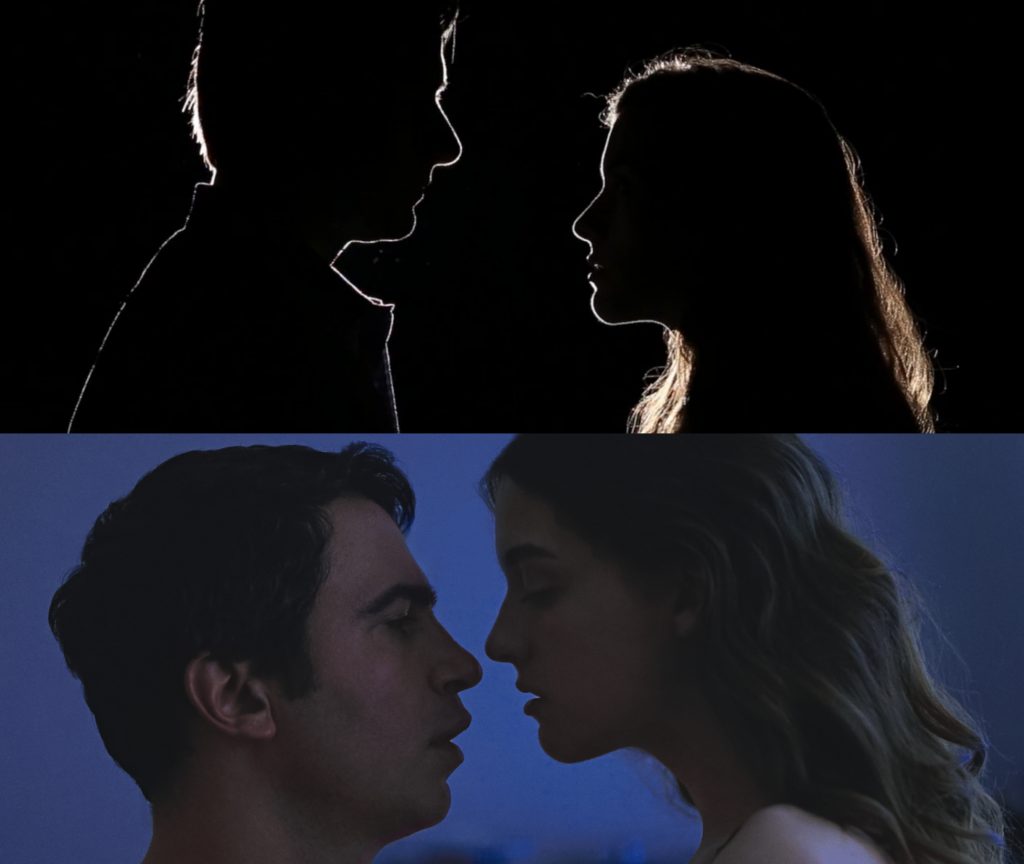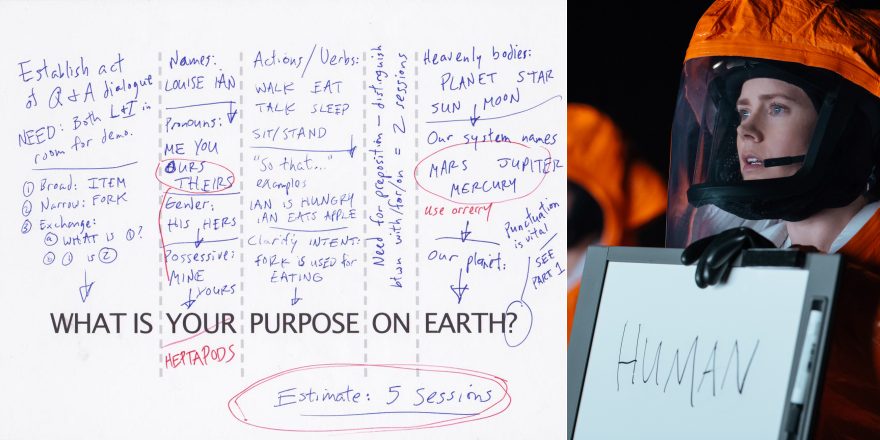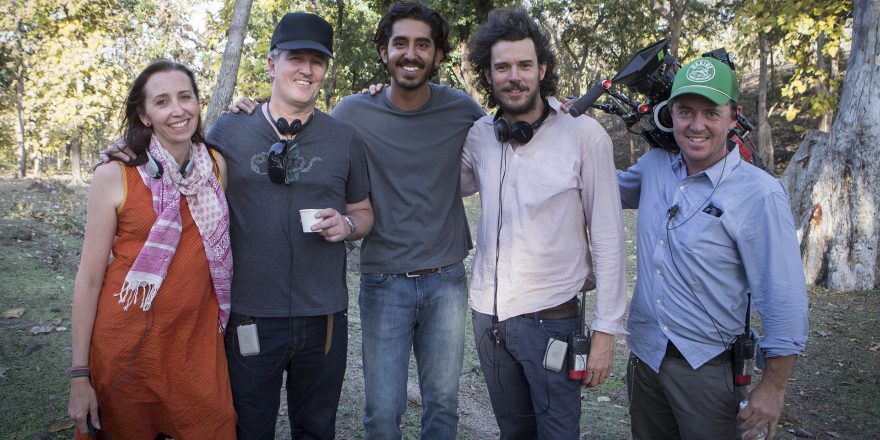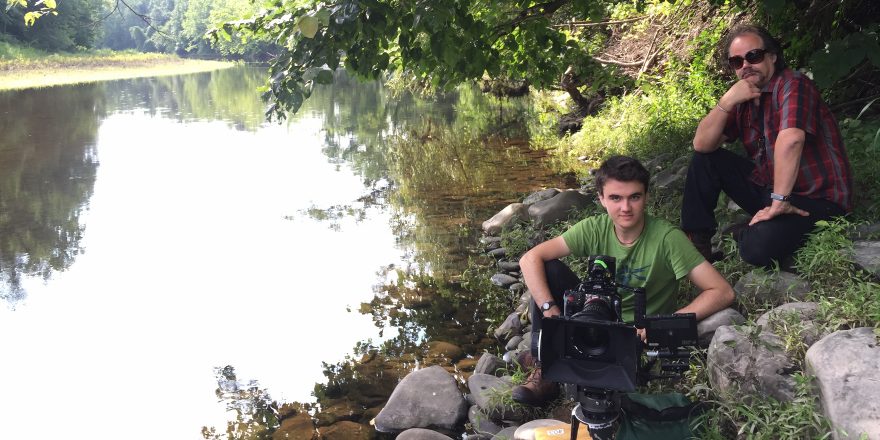When I was 20 years old, I wrote, directed and starred in a film called Blame, about Abigail, a girl whose obsession with The Crucible (and her high school drama teacher, Jeremy) sparks a nerve in her jealous and vengeful classmate, Melissa. I produced the film with my mom. In this article, I will embarrass myself greatly by featuring actual excerpts from the very first unedited draft of Blame, dated December 2010, which I wrote when I was 15 years old, as well as a variety of other development notes, illustrations and videos. My mom, Laurie Shephard, helps to roast me.
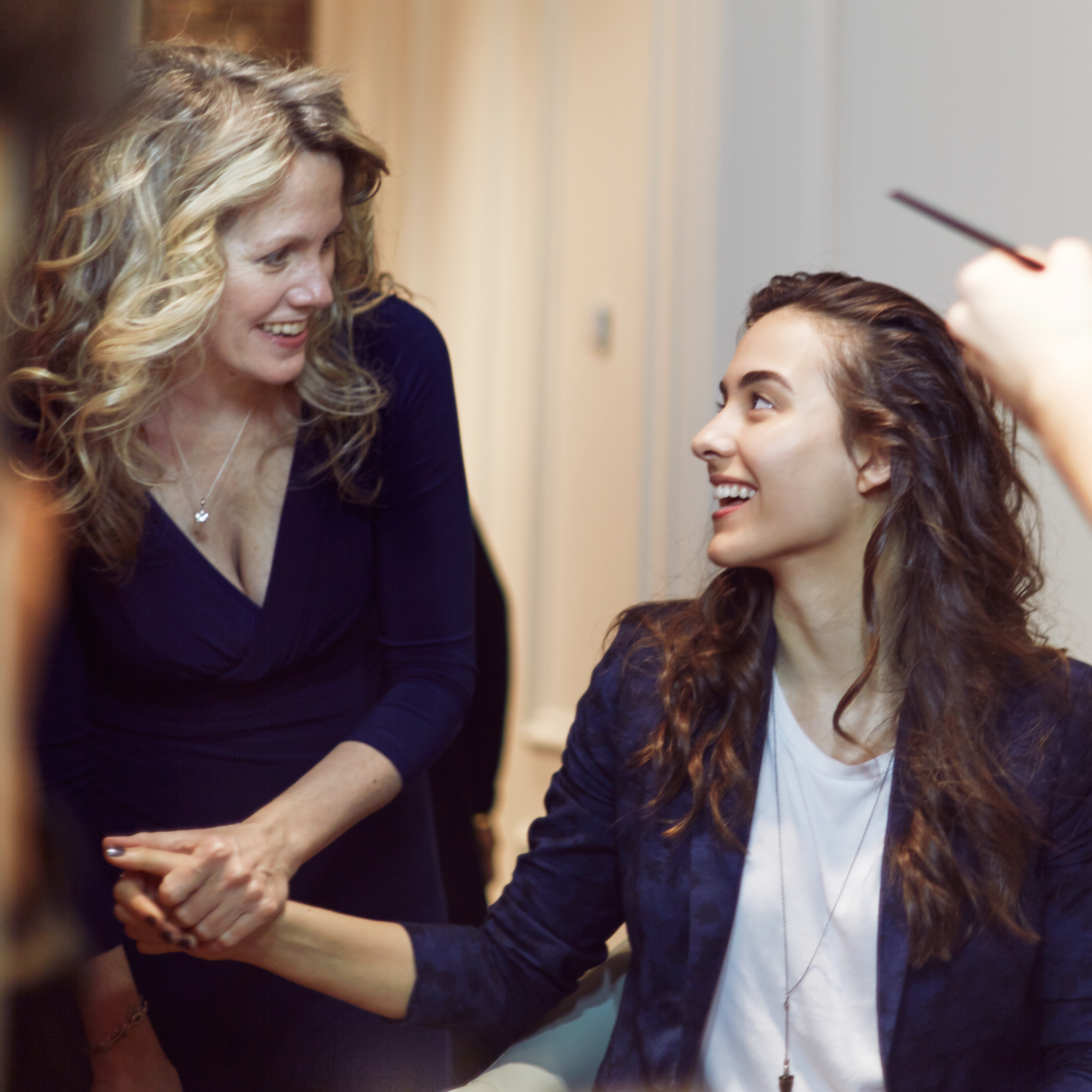
The intention of this piece is to pull the curtain back on the unique process of developing a film as a teenager — all the way from the very first draft to the much-developed version that was filmed a full five years later. When it’s noted in articles about me that I wrote this film at 15 years old, I always wince — because while I wrote a version of this film at that age, it is unrecognizable in relation to the final film. Blame was a wild journey of development for me and my mom (who shares story credit). Here are a few snapshots of the progress along the way (annotated with our commentary as we revisit these memories!).
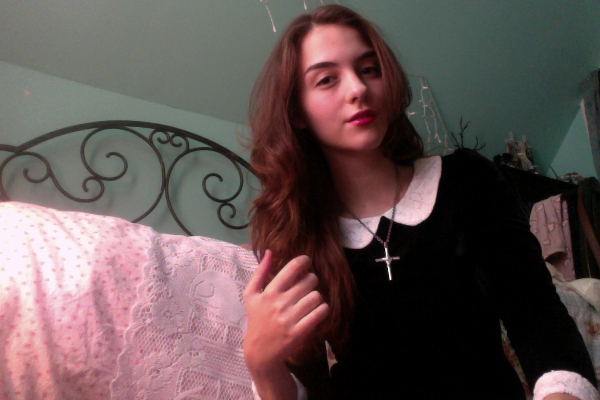

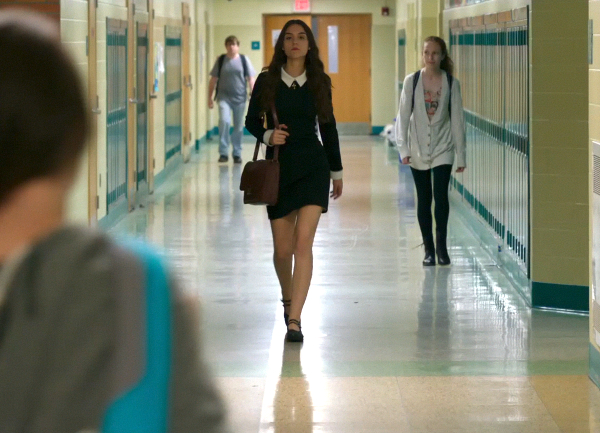
Me as an actual teenager, compared to my character in the film — you could say I was working on Abigail for a while! (And if you are wondering, yes, I am posing for the webcam with my copy of The Crucible.)
Jeremy’s First Day
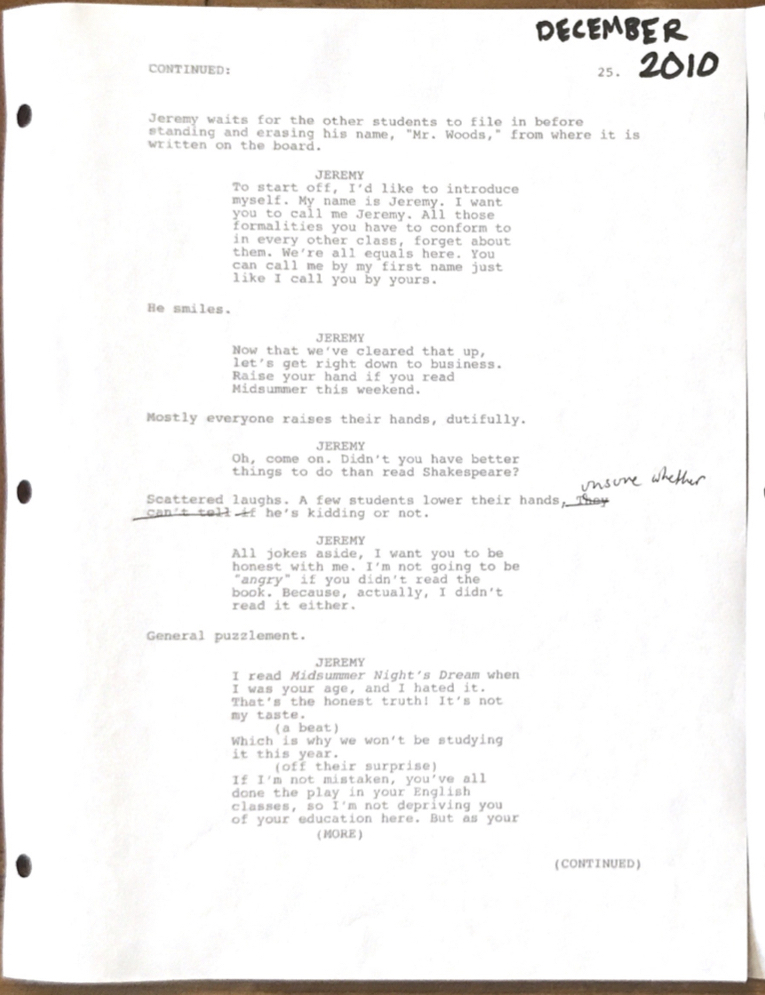
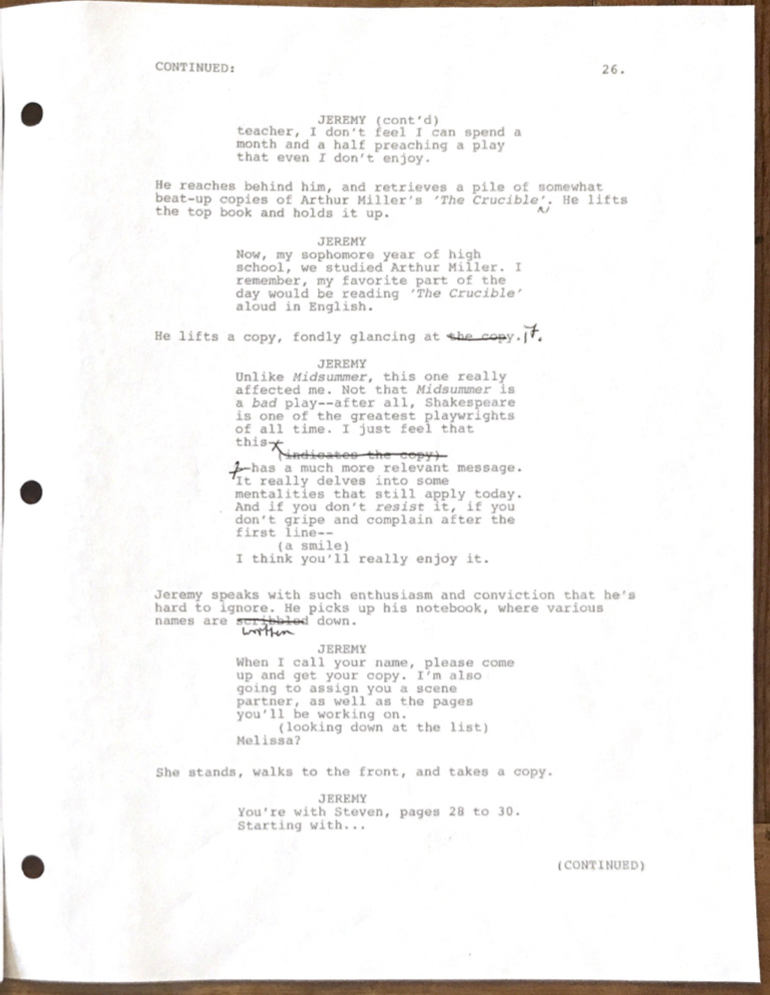
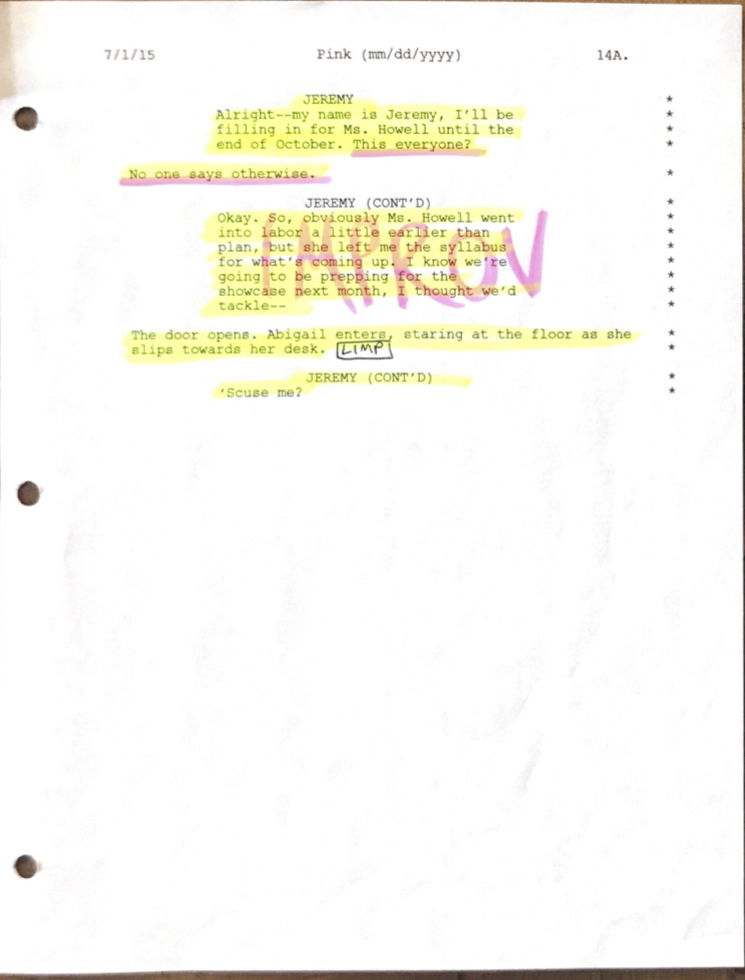
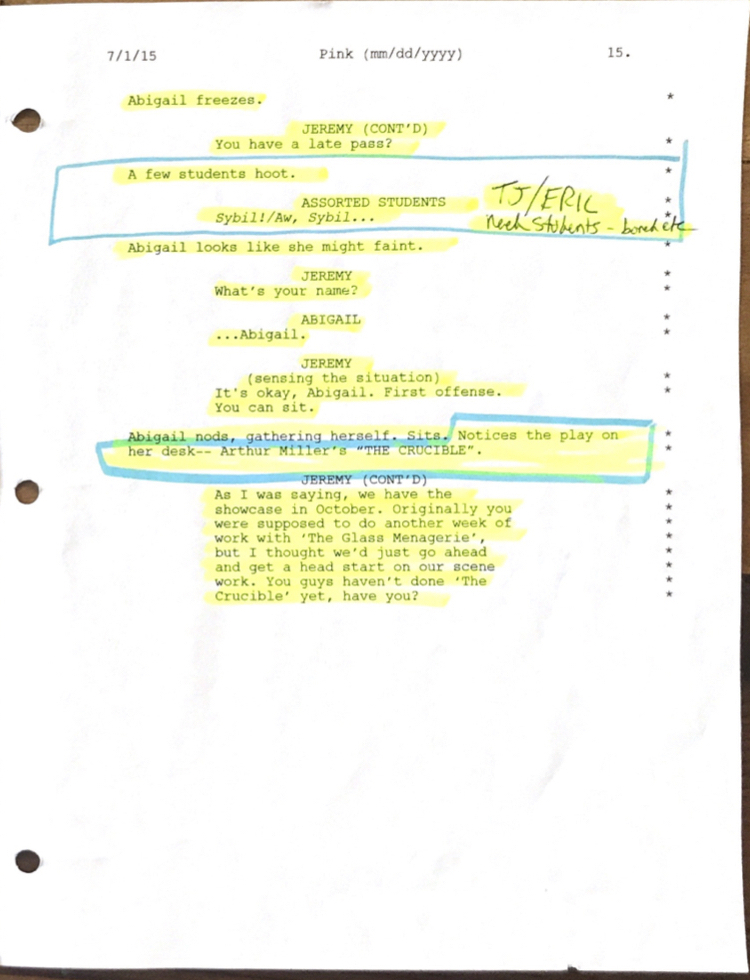
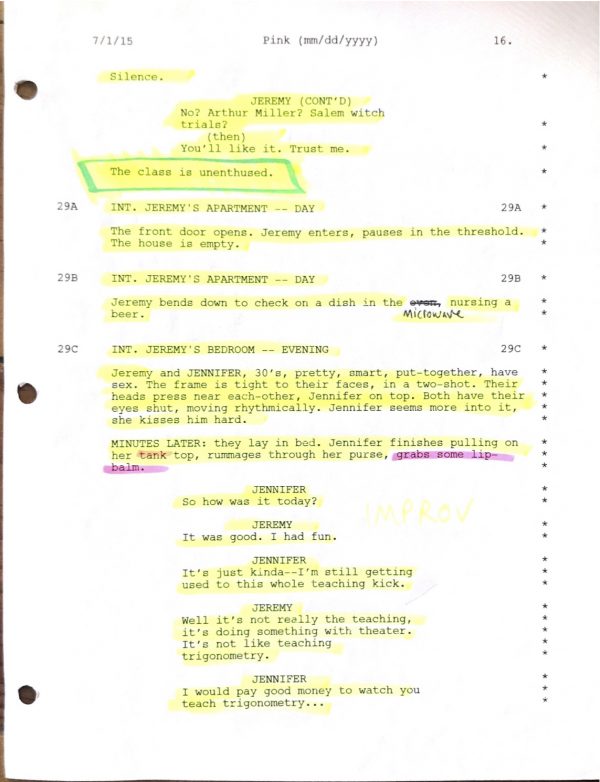
Quinn Shephard: Here is a side-by-side comparison of two different versions of Jeremy’s first drama class scene. The first (December 2010) is my unedited first draft of Blame, written at age 15. I had not yet shown the script to anyone or gotten any notes. The second, highlighted version is the draft I used in production (July 2015), which still underwent changes on set (as indicated with the spots I marked for improv). You will be able to see from the drastic difference here that, contrary to what some journalists may have you believe, I was not a literary prodigy at 15, and had much learning to do when it came to writing dialogue that sounded realistic for a human adult male.
Laurie Shephard: From the looks of this original scene, Jeremy apparently bounces from school to school, grooming children by throwing their curriculum away and assigning The Crucible. He apparently had this monologue prepared, and says things like, “We’re all equals here” and “If you don’t resist it …” I did point out the problems with this scene when I read it for the first time, but probably did not tell Quinn how creepy it came off! I think I just said, “I doubt a teacher would be allowed to be quite that familiar with the students right off the bat.”
QS: I also love how Jeremy shames the students for liking Shakespeare just to sell The Crucible. It’s almost like a late-night infomercial: “But wait, there’s more!”
Abigail in the Woods
QS: If you’ve seen Blame, you definitely know this scene does not exist in the film. Again, this is from the original December 2010 draft of Blame. The actual text is not edited, but you’ll notice I have quite a few handwritten notes on the pages. For context, in this draft a very Alex Forrest-inspired Abigail steals a Post-it note from Jeremy’s wife Diane (also not in the film, replaced by a girlfriend named Jennifer) and forges her handwriting to tell Jeremy to meet her in the woods in the middle of the night — so that she can re-enact The Crucible in her nightgown, apparently. I had basically wiped my memory of this scene for at least the past few years of my life — until I re-read the first draft to write this article, of course. If you look closely, you’ll see that there is a gun in the scene as well — but, over top of the text, I have written “gun cut,” indicating that after a round of notes I came to the realization that the gun was, alas, not a helpful addition to this indie drama. This scene also has fun illustrations, so hopefully that distracts you from the utter absurdity!
LS: Jeremy seems a little slow. He’s still looking around for his wife halfway down the page? Ah, I see he then comes to a realization. “You left me the note.” Sherlock?
QS: Why is he not mentioning the fact that she’s literally doing The Crucible?
LS: “And then she raises a gun in front of her, pointing straight at Jeremy.” That’s not in The Crucible! I also like “Jeremy, for once, is at a loss for words.” Because in this draft he never stops talking!
QS: WHY DOES HE ALSO START DOING THE CRUCIBLE?? I think my original intention was that he didn’t want her to kill herself and did it to distract her, but that doesn’t really translate here.
LS: No, I definitely got that he is doing The Crucible to stop her from killing one of them. There is a “change in his eyes” noted. It’s not until he starts saying those lines that she’s distracted from pulling the trigger. Also — how far can they really go into this play? It doesn’t have a happy ending! He knows he has to get out of there before the nooses come out.
The Teaser Trailer
QS: This was a teaser trailer I put together for Blame in August 2013 for $150 with four of my friends, my mom, and a DSLR, to demonstrate my vision (lo-fi style) for the film. Despite the DIY nature of the trailer, I explored a lot of imagery and costume/art design that bore a striking similarity to the footage we shot two years later. Here are a series of side-by-side image comparisons between the teaser and the actual film.
LS: When people ask you how you pull off a film like this in 19 days, I always say — it took a lot of pre-planning. You find out what works and what doesn’t work beforehand. Making this allowed us to see what was working and what wasn’t, and made the whole world feel more real!
The Evolution of Melissa
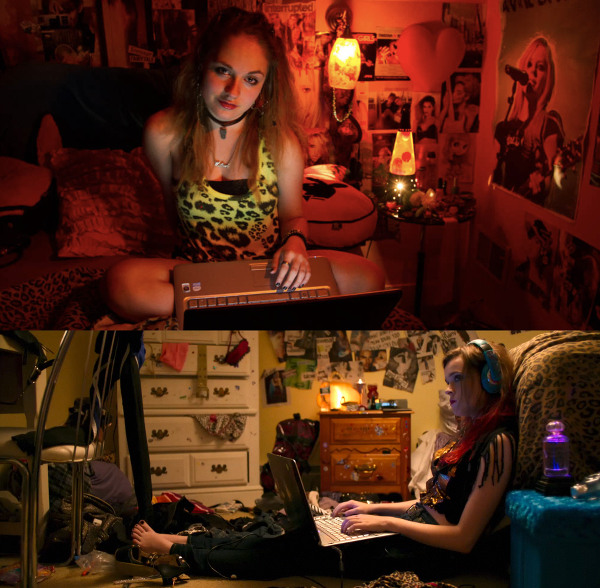
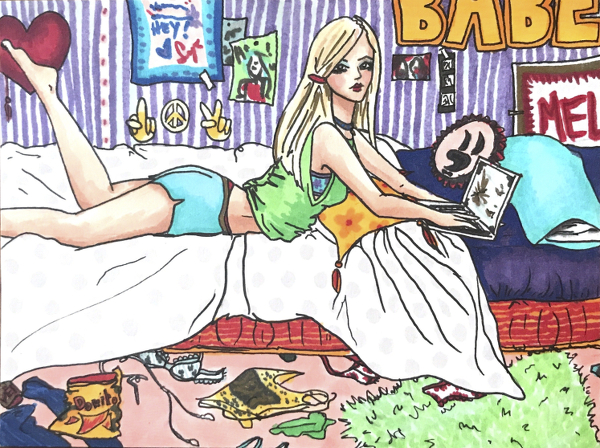
QS: Here is a concept sketch of Melissa from January 2014, an image taken while filming the 2013 teaser, and a still from the final film. Her original physical appearance is fairly different from Nadia Alexander’s Melissa (none of the famous red dip-dyed hair!), but the styling of the bedroom is almost exact!
QS: When Nadia first read the script, her impression of Melissa was much more “Regina-George,” a classic polished blonde mean girl. In between her first and second screen test, we reworked a bunch of her scenes to make her dialogue and demeanor rougher and less polished, so it would fit Nadia’s natural instincts as an actor better. I even made her a playlist! It was mostly angry girl music, with a little Sufjan mixed in for her vulnerable moments. The whole process really helped bring alive a girl that existed in my mind, but needed more life on the page.
LS: Funny note — when the final teen cast first did their ensemble chemistry test, which was an improv of the basement party scene (complete with rap music playing), Nadia almost immediately plopped right down on Owen’s lap. We were amazed at how incredibly bold and comfortable she seemed with him — little did we know that they had actually known each other for six years!
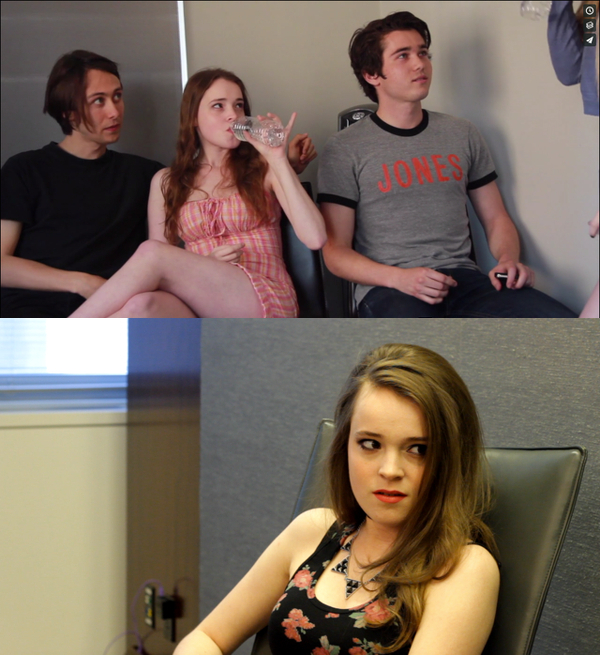
These are just a few of thousands of photos, papers, drawings and drafts that I still have cluttering up my old childhood bedroom. Blame was very much a labor of love — it was my hobby, my after-school activity, my first dream, and ultimately the thing that has jump-started my career. All jokes aside, I want to truly thank my mom for always supporting this crazy endeavor, working her butt off, and helping me make my teenage dream a reality! We spent so many years of our lives on this and we’re so excited to share it with the world.


